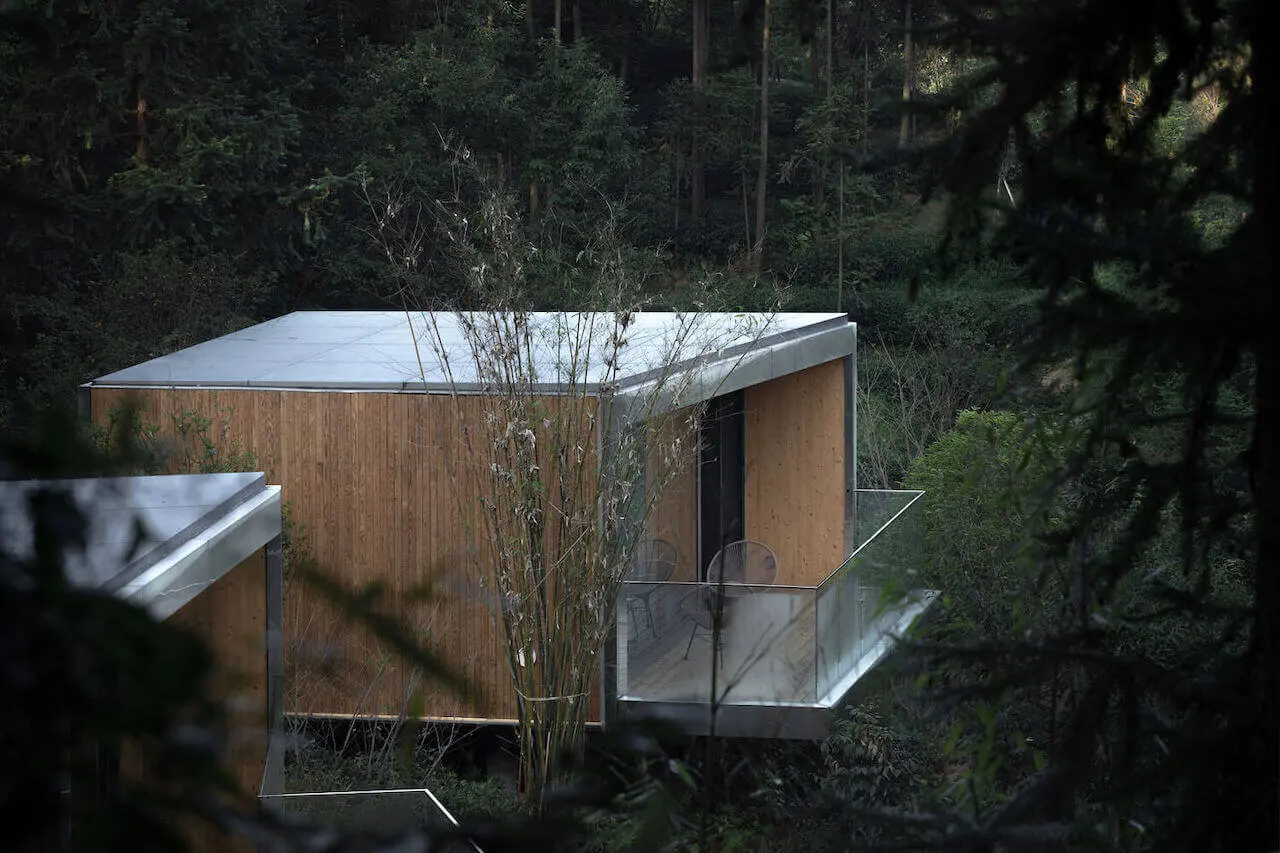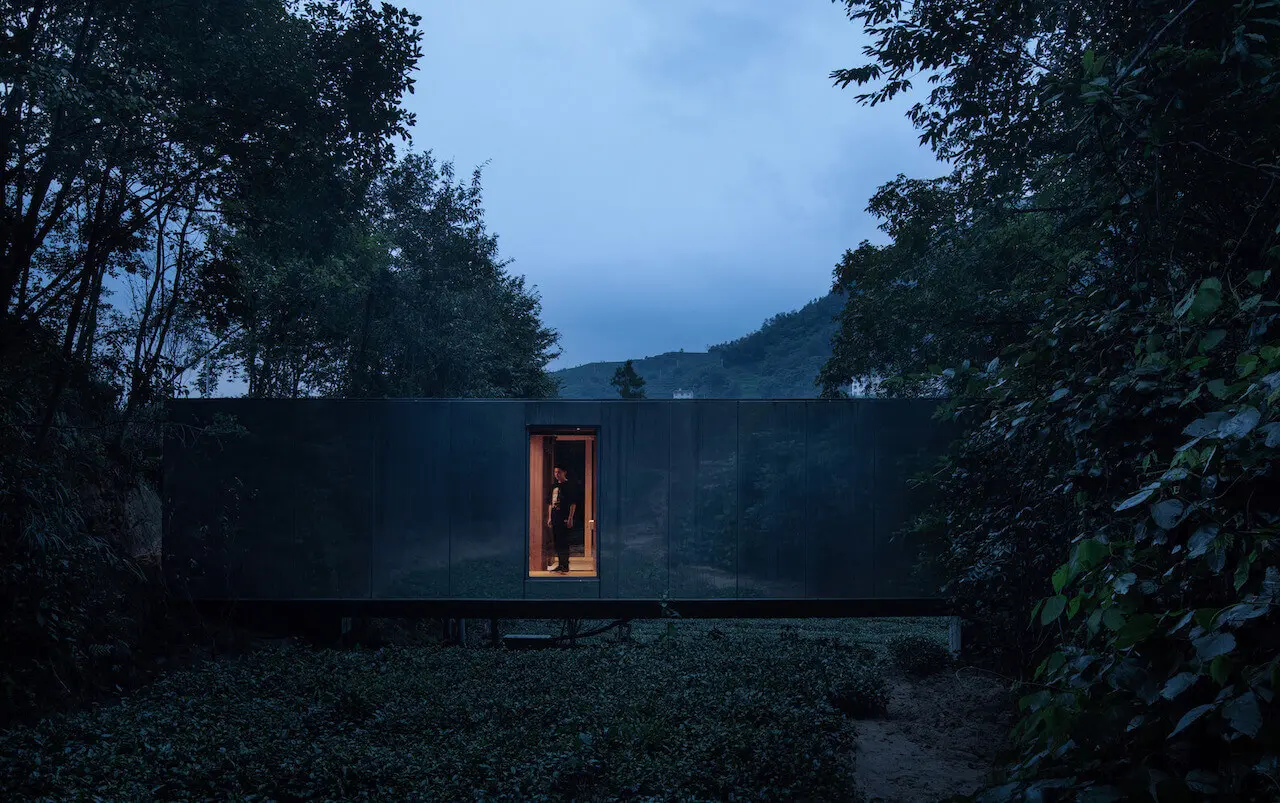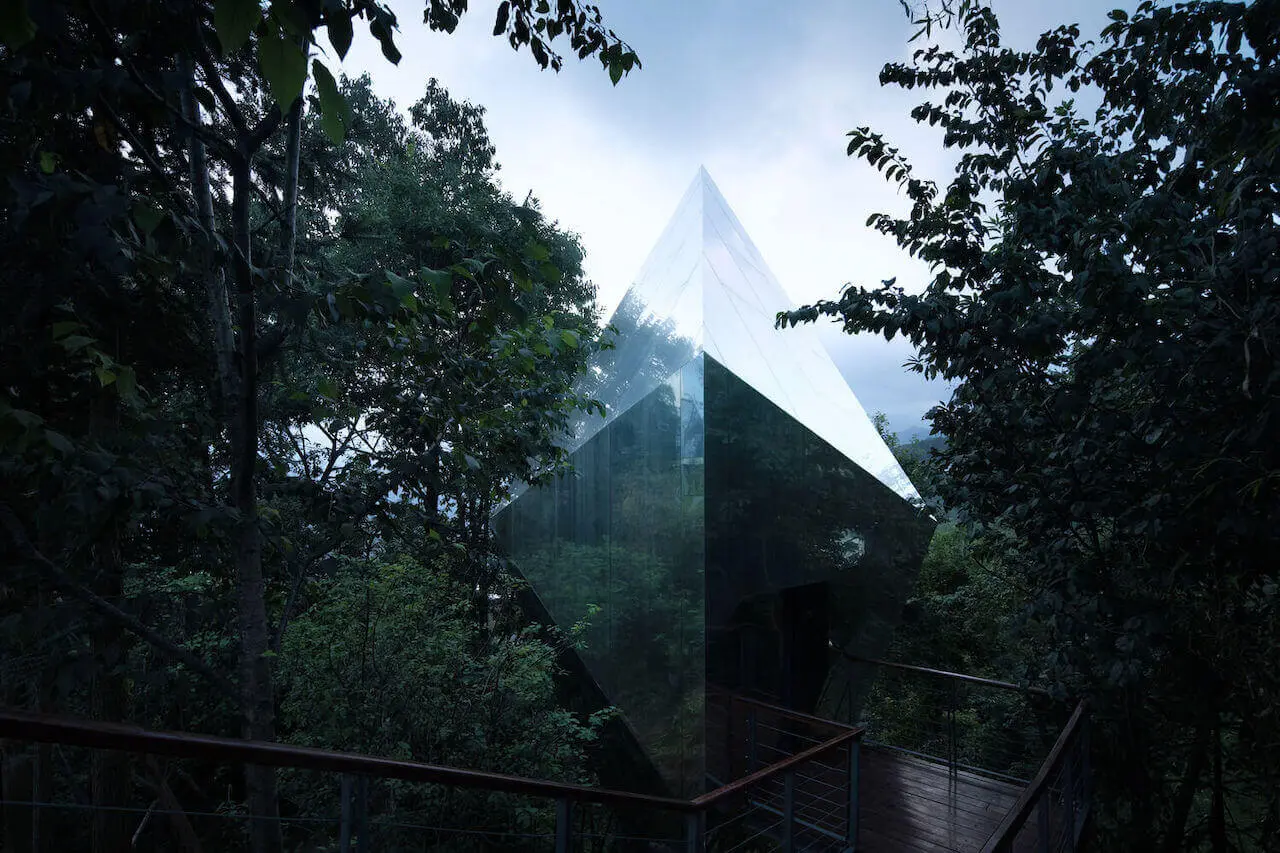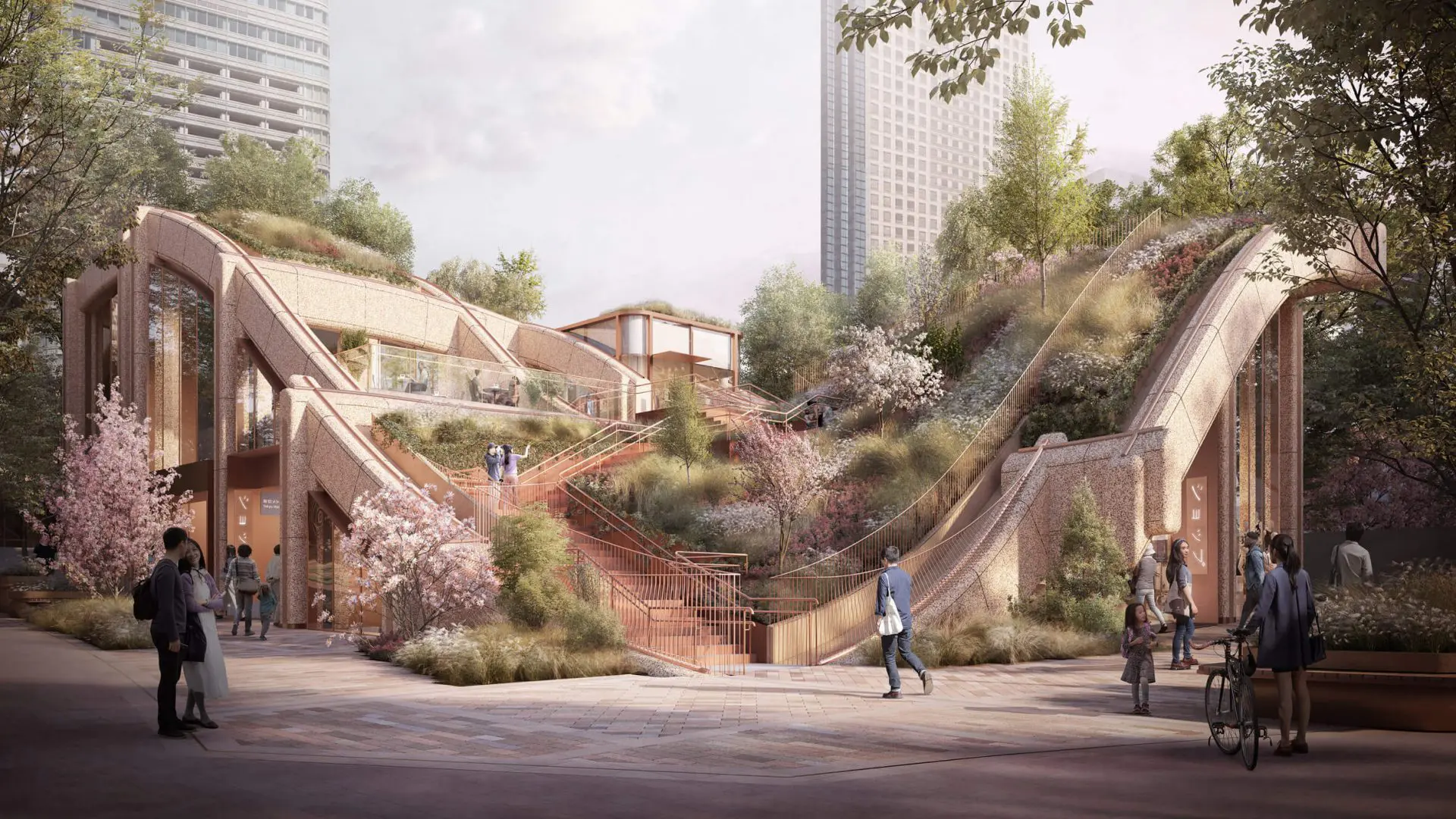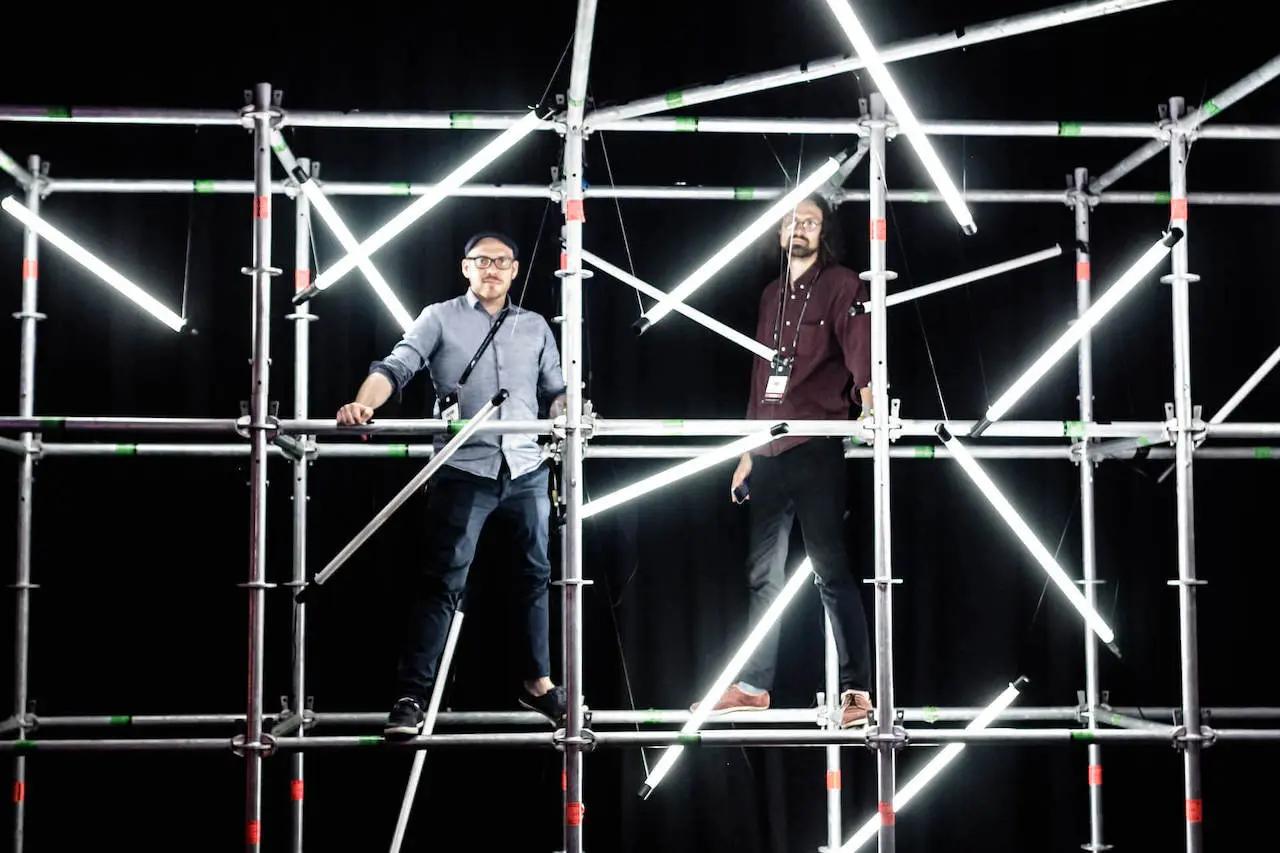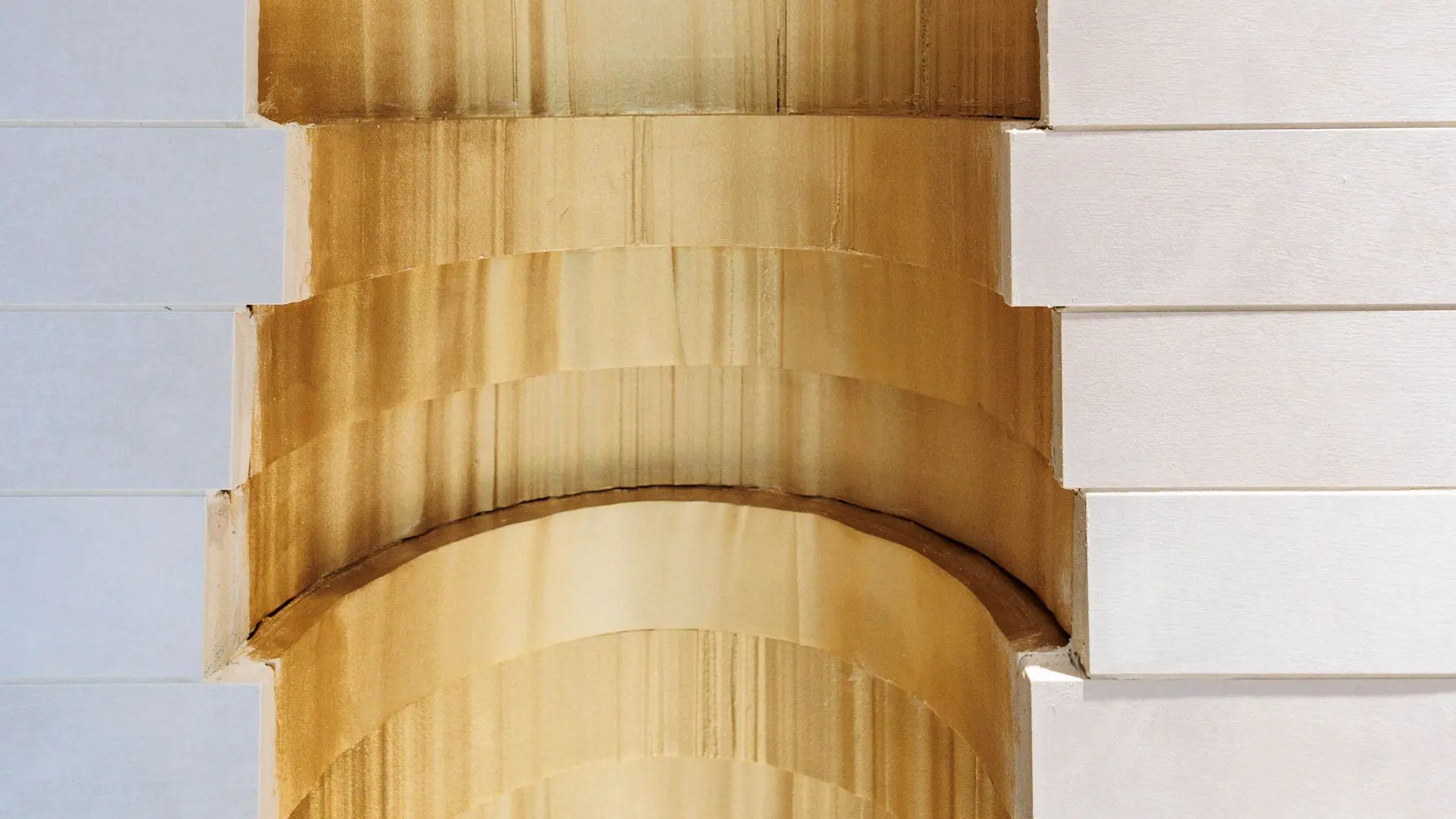18 mirrored timber cabins form a mountainside hotel
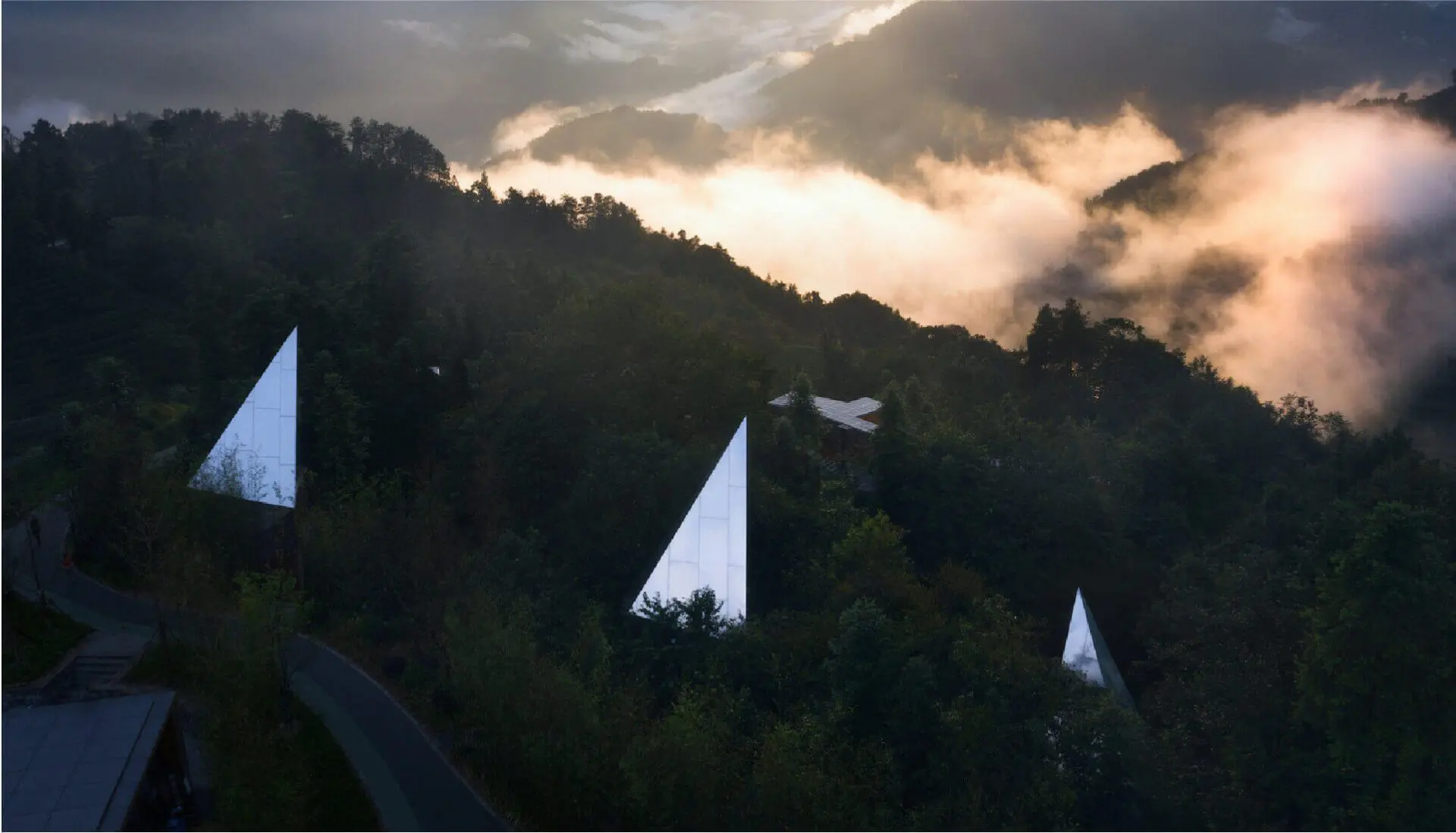
Wiki World and Advanced Architecture Lab have collaborated to design a series of 18 timber cabins that are clad in reflective glass.
In Yichang, China, Advanced Architecture Lab (AAL), and Wiki World have designed Mountain&Cloud Cabin which consists of 18 timber cabins that adopt the German HBE CLT prefabricated system.
Why Mountain&Cloud Cabins? To blend elegantly into the mountainside with minimal disruption to nature
AAL and Wiki World used some of the latest advancements in modern architectural design to create cabins that offer minimal disruption to the natural environment so that these cabins can be “built as nature”. This achieves the aesthetic that the cabins are futuristic but also blend in with nature.
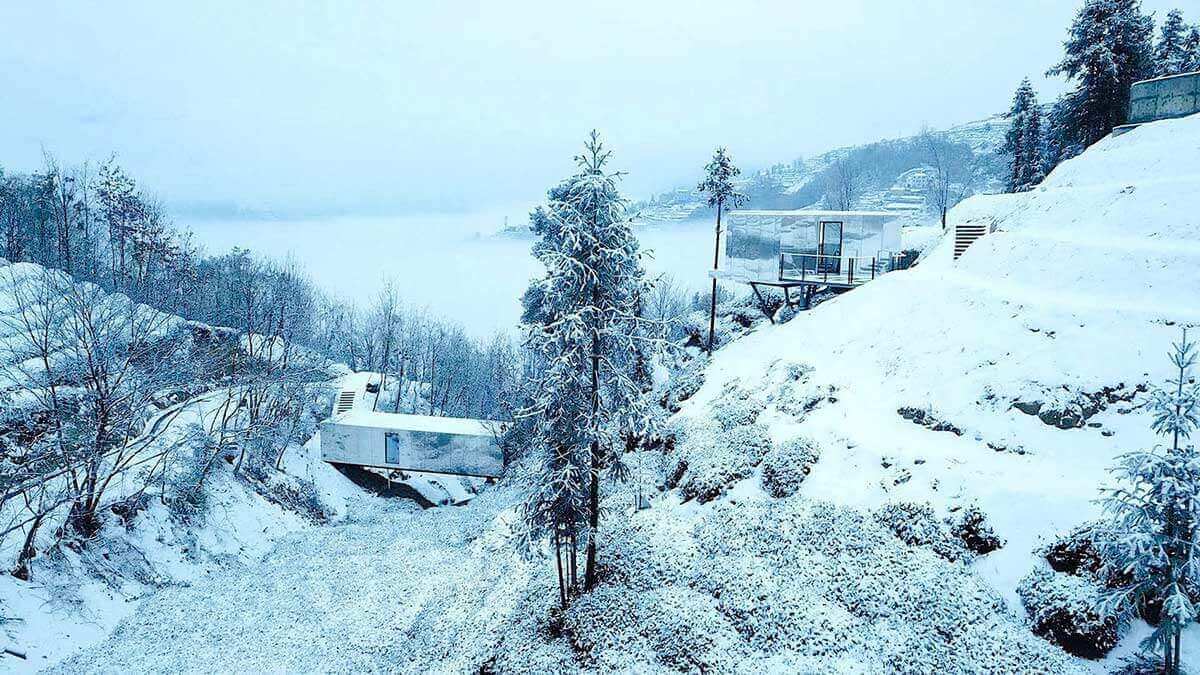
The minds behind Mountain&Cloud Cabins – Advanced Architecture LAB and Wiki World
Chinese architecture studios Wiki World and Advanced Architecture Lab have collaborated on this project to create a collection of 18 timber hotel cabins. The Advanced Architecture LAB (AAL) is based at the Singapore University of Technology and Design (SUTD). It’s directed by Professor Thomas Schroepfer who leads the Lab in investigating the increasingly complex relationship between design and technology in architecture.
Lead architect Mu Wei spent a lot of time living in Norway, where his design inspiration is taken from. This mountainside reminded him of living in Norway and the Norwegian aurora. This gave him the inspiration to design cabins that allow the hotel guests to experience futuristic design and technology while being emersed within nature.
AAL has won prestigious awards over the years, including The Chicago Athenaeum and The European Centre for Architecture Art Design and Urban Studies International Architecture Award, The Singapore President’s Design Award, The German Design Award, and many more.
Find out more about architects designing with nature in mind, don’t miss Nature is the biggest luxury – An Interview with Rick Joy.

Materials & Techniques – Timber and Glass
The Mountain&Cloud Cabins consist of 18 timber cabins that are hotel rooms, a café, and a swimming pool. The cabins have 5 different designs that range in size, from 35 sqm up to 65 sqm. Some of the cabins are designed as a single-family space, while others have divided living spaces.
The façade of these cabins have reflective materials such as metal and glass which provides real-time mapping of the seasons while they merge with nature.
The cabins are designed to have a glass façade that helps them to blend into the surrounding forest. From the external view, the glazing acts as a mirror which reflects the trees and the mountainous landscape, which results in the cabins becoming part of (and disappearing within) the landscape.
The main structure of the cabins is based on the German HBE CLT prefab system, which meant that the main structure of the cabins could be assembled within 1 day.
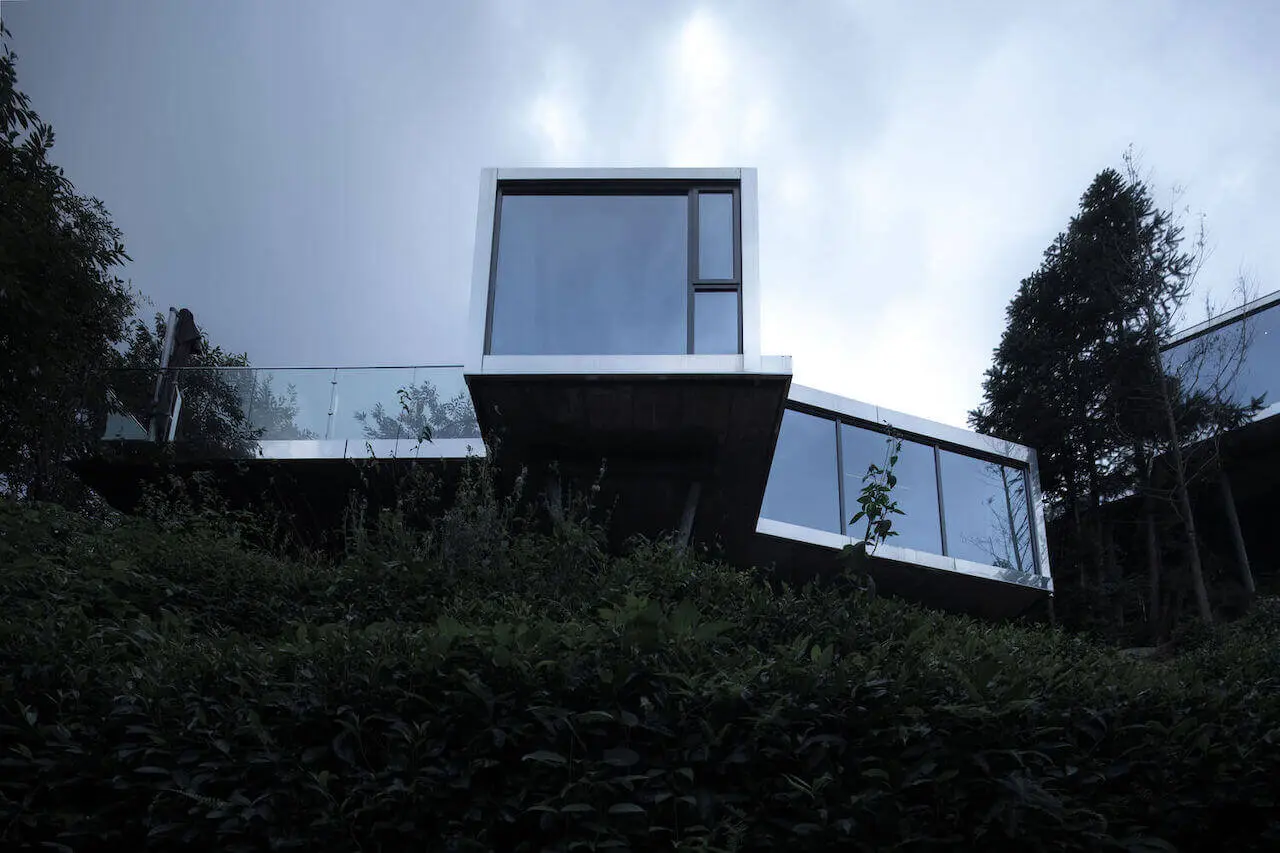
Style & Aesthetics – Sophisticated Scandinavian
The cabins come in 5 designs: Type Y, Type Bridge, Type F, Reception & Café, Type T. Type Bridge is a 14-metre long construction that’s suspended above a tea field and included a courtyard terrace. It’s a two-storey building that achieves a vertical loft-style aesthetic, while Type T and Type Y have a viewfinder layout. The bedroom, bathroom, and living room of these cabins face the mountain view that overlooks the Deng Village which offers beautiful views of the sunset.
The interior design of the cabin oozes with Nordic log cabin vibes, which is accentuated by cozy log fires and natural wood throughout. The minimalist design celebrates the natural wood textures to result in a refined holiday atmosphere that brings the guests closer to the natural environment.

A container for breathing in nature
The architects designed the cabins to have underfloor heating and a fresh air system that has an air exchange rate of 100 cubic metres per hour. This design creates efficient energy consumption and results in a container for breathing in nature.
The pre-fab wooden cabin design formulates a structure that meets the standards of energy-saving buildings to ensure a longer life span with a timeless interior design. Each wooden cabin is equipped with hotel intelligence, air conditioning, water heaters, and a fresh air system. A fireplace can be found in some of the cabins to create a cozy log cabin environment.
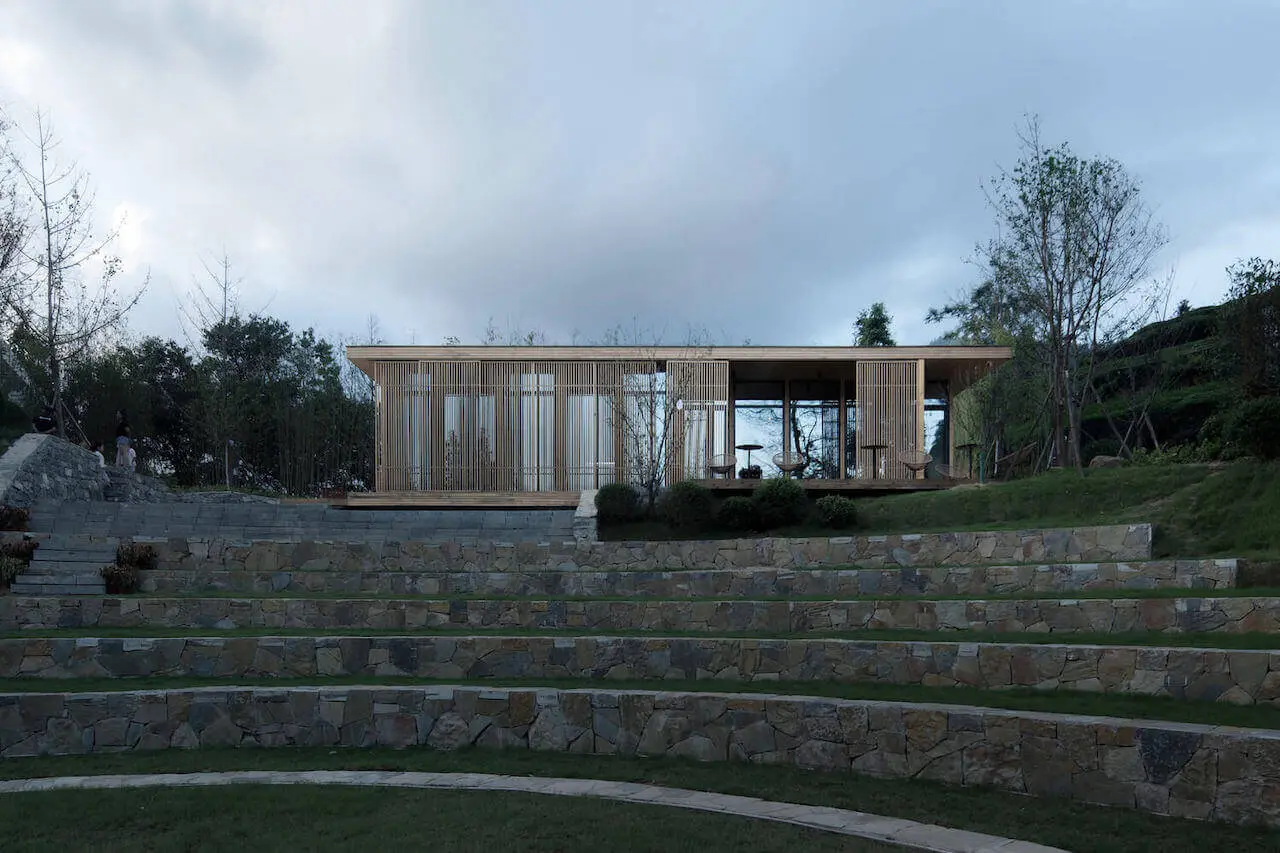
Design memento – Sustainability
The overall design of the cabins was intended to respect the terrain and the environment; therefore, the 18 wooden cabins were carefully placed on stilts within the mountain. The point foundation and the stilts create minimal damage to the environment and allow the cabins to simply float among the natural landscape.
These wooden cabins are manufactured using mature HBE glue-laminated panels of timber which afford a low deformation rate of the timber and a highly durable finish. The assembly of these prefabricated cabins means that all parts of the construction can be produced at the same time.
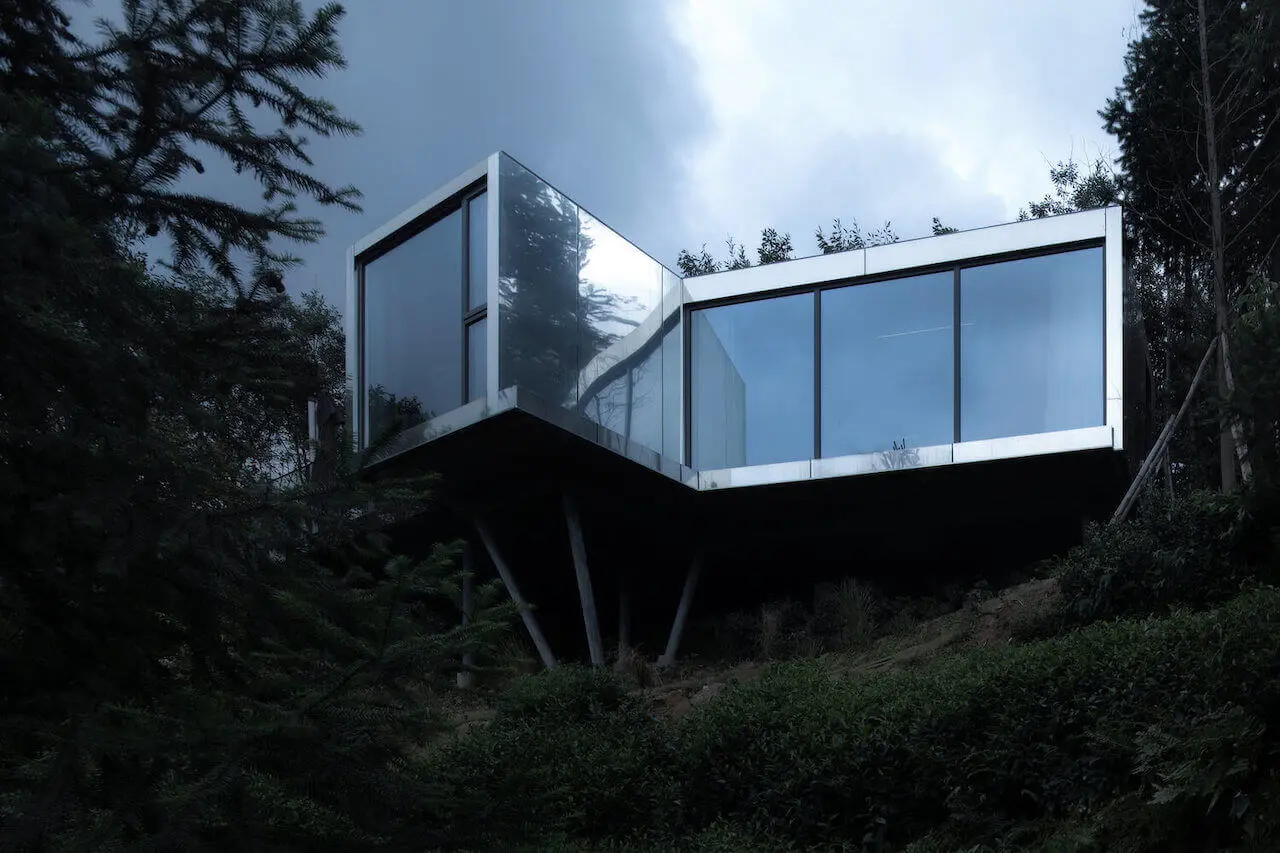
The writer’s comment – Immersed within nature
The design of these log cabins will provide guests with a beautiful holiday experience immersed within the natural mountainside environment. All year round the cabins will blend with their surroundings thanks to the mirrored glass facades that reflect the landscape.
The architects have designed the cabins in a clever way so that each cabin affords unobstructed views of the landscape without overlooking the neighbouring cabins. This achieves a sophisticated hotel experience that will enable guests to escape from their busy lives.
Curious to know more about hotels that blend with nature? Don’t miss how Czech studio Formafatal designed a villas resort in the Costa Rican jungle.



